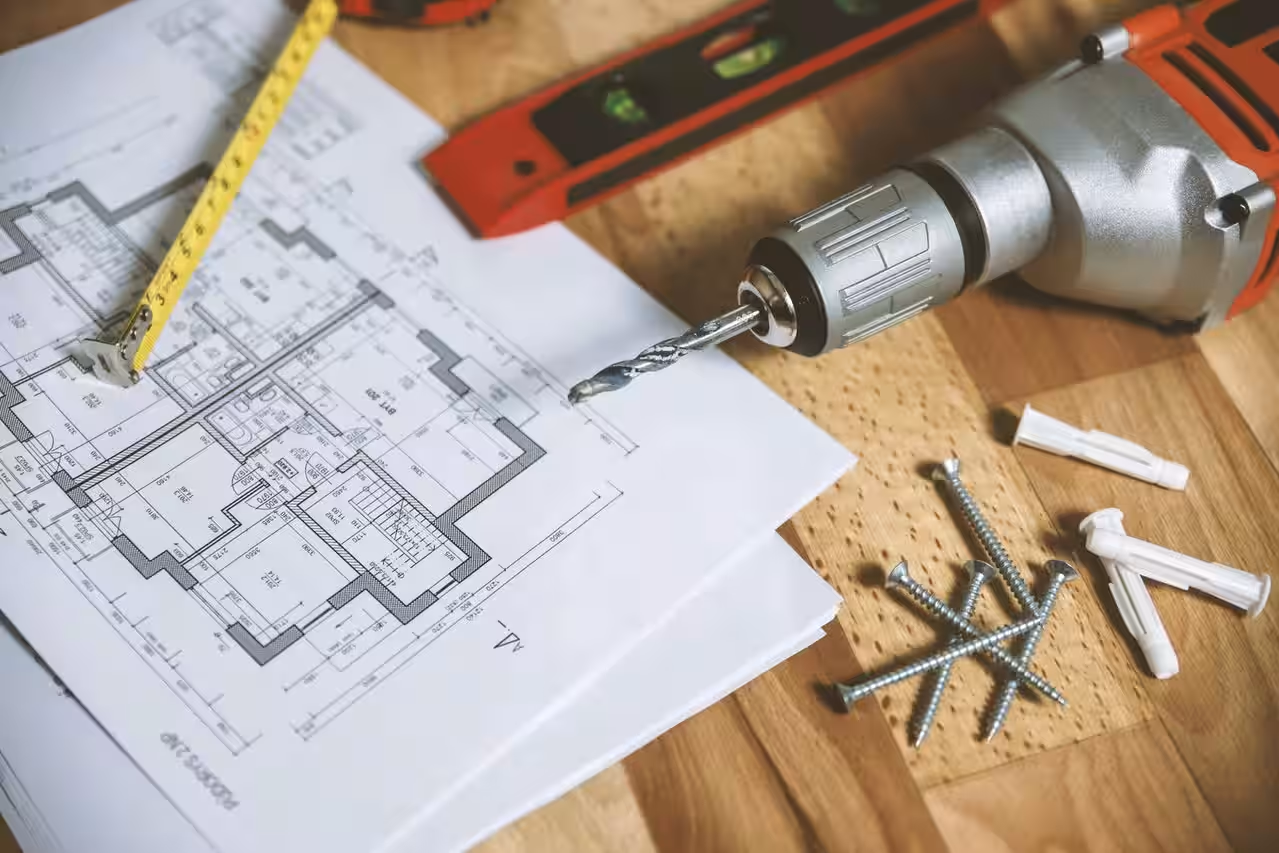How much is your house worth? It’s a simple enough question, but there’s more than one answer – especially as far as your insurer is concerned.
When you get a home insurance quote, most providers will ask for an estimated rebuild cost. This guide will walk you through everything you need to know – what the rebuild cost is, how and why it differs from the market value, and why it’s so important to get it right.
We’ve broken it down into four sections:
- What is rebuild value?
- When might the rebuild value be more than the market value?
- Why is rebuild value important?
- How should you calculate rebuild value?
What is rebuild value?
It’s an extreme scenario, but imagine your home was completely destroyed in a fire or flood. The rebuild value (or reinstatement value) is the amount it would cost to rebuild the property from the ground up – every last brick.
Rebuild value includes:
- The costs of demolishing and clearing away what’s left of the original property
- Fees for professionals, such as architects and surveyors
- The cost of the materials and labour needed to rebuild the property to the same standard as the original
Why does rebuild value matter? For insurance purposes, it’s important that the rebuild cost you submit before receiving a quote is accurate. If you overestimate it, you’ll pay a higher premium than you need. If you underestimate, you’ll need to pay the shortfall in the event of a claim.
Crucially, rebuild costs are not the same as your property’s market value: the amount the house would sell for on the current market. Usually, the market value is the higher of the two because it includes the land your property sits on, the value of which can vary wildly according to location. Factors such as market supply and demand and school catchment areas will impact market value, but won’t affect the cost of rebuilding.
In 2018 Direct Line analysed property prices for three-bedroom homes across twelve major UK cities and found that, at £277,608, the average house price was 59% higher than the projected rebuild cost of a similar property (£164,000).
When might the rebuild value be more than the market value?
There are plenty of cases where the rebuild cost is higher than the market value. A centuries-old thatched cottage will obviously cost more to reinstate than a modern brick-built home, both in terms of materials and labour.
It takes just minutes to enter your property’s details into a site that calculates estimated rebuild value. The Building Cost Information Service (BCIS), part of the Royal Institution of Chartered Surveyors (RICS), offers a free, simple tool that does just that. But it’s clear about its limitations: the figures given ‘Are based on specific examples of different house and flat types of average quality, built using standard construction methods.’ In other words, if your home is of a higher-than-average quality, or built using anything other than standard construction materials or methods, the rebuild cost could be a lot higher.
As a general rule of thumb, if your property falls into any of the following categories it’s worth arranging an independent assessment to determine the rebuild value:
- Homes made of non-standard materials (anything other than stone or brick)
- Homes with special design or architectural features
- Listed buildings, or homes with historical significance
- Homes of above-average build quality
There are a few other factors to consider too. For example, rebuild costs may be higher if poor access makes it difficult to get vehicles and materials to the site. And the region you live in could make a difference to labour costs, too: according to Direct Line, construction costs in London are around 38% higher than in Leeds.
Historic and listed buildings
If you live in a listed building you’ll know how exacting the rules on alterations and repairs can be. And if the property is damaged, you’re required by law to reinstate the property using the same materials as the original build, regardless of cost. Extra costs could be incurred by:
- The purchase of non-standard materials
- Additional labour, including skilled craftspeople
- Fees charged by specialist insurance surveyors, who’ll check the repair work is in keeping with the historical context of the property during the claims process
- Alternative accommodation during the rebuild, which may take longer than usual due to the need to obtain planning permissions and consents
Why is rebuild value important?
Most insurers require that the sum assured is the full rebuilding cost of the property. And, as the insured, it’s your responsibility to provide an accurate figure.
Our partners at Rebuild Cost Assessment assess over 3,000 high-value homes a year and find that over 90% of them – many of whom insure for the market value of their property – are either over or underinsured.
Rebuild Cost Assessment say that around one in five homeowners they deal with are over-insured. On average, they’ll be paying around 20% too much each year for their household buildings cover.
The consequences of under-insuring can be far more severe, with homeowners liable to make up the shortfall following a major incident. The story of a family left £450,000 out of pocket after their thatched property burned to the ground is just one example of how devastating inadequate insurance cover can be. According to Rebuild Cost Assessment, over two thirds of homes are under-insured, with many covered for less than 70% of the true rebuild cost.
How should you calculate rebuild value?
The best way to work out rebuild value depends on the type of property:
New purchases
If you’ve bought your home recently the rebuild cost will be on your mortgage valuation or deeds.
Standard homes
If you own a standard, brick-built home you could use the Building Cost Information Service’s (BCIS’s) residential rebuilding cost calculator, or seek a professional assessment from a RICS-regulated chartered surveyor.
Non-standard homes
If your home is made from non-standard materials, has special architectural features, or is a listed or historical building, contact a chartered surveyor
Flats and maisonettes
If you live in a leasehold flat, your landlord or the building owner will already have buildings insurance in place. If you do need buildings cover for a flat or maisonette, it’s best to approach a chartered surveyor for an accurate rebuild valuation
Renovation projects
If you renovate your home or build an extension, recalculate the rebuild cost and speak to your insurer to make sure you are fully covered
To sum up…
Calculating the cost of rebuilding your home can be complex, and underinsuring can have dire consequences should you need to make a claim. While rebuild cost calculators can provide a useful estimate in many cases, non-standard properties require a more tailored approach.
At Stanhope, we specialise in insuring non-standard and high-value homes, as well as listed buildings.
We even offer bespoke cover for thatched properties. We also work closely with our trusted partners at Rebuild Cost Assessment, who can appraise the rebuild at a discounted rate for our customers. To find out more, just get in touch with our team.

